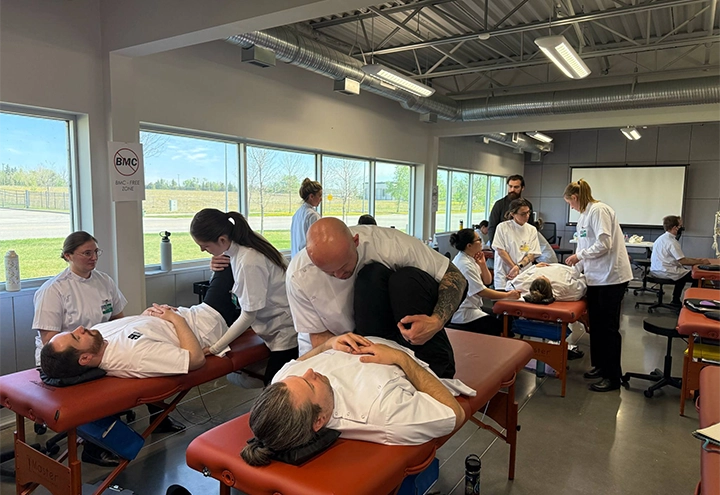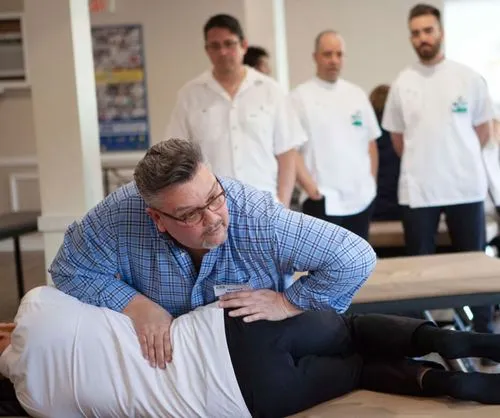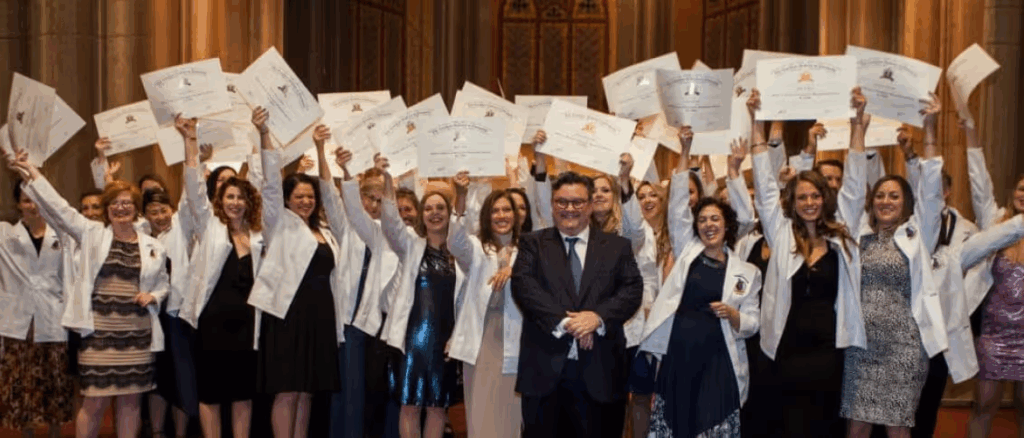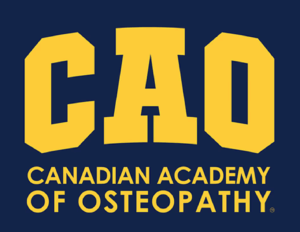What is Osteopathy?
Osteopathy is a holistic, hands-on form of manual therapy that treats the body as a whole, working to identify the cause of an issue rather than simply treating the symptoms. It’s based on the understanding that the structure of your body — bones, muscles, joints, fascia and organs — influences its function. When something in that structure fails to move or work, that can have repercussions for your general health and well-being.
Osteopathy is a manual form of therapy that emphasizes the relationship between the structure and function of the human body. This therapy follows a belief in the body’s ability to self-heal and self-regulate, which is why Osteopathic Manual Practitioners do not see themselves as healers, but instead as facilitators to health.
First introduced by founder A.T. Stills in the 1870s, osteopathy is a science, a philosophy, and a practice.
A Whole-Body Approach
Unlike many other types of health care, osteopathy treats the body as a whole. If you come in with knee pain, for example, an osteopath doesn’t just look at your knee. They will examine how your hips, back, posture — even your daily habits — could be contributing to the issue. Osteopathy addresses the underlying cause, not only relieving pain but also reducing the duration of pain and providing you with the balance to avoid recurring problems.
Gentle, Non-Invasive, and Effective
Osteopathy is a drug-free and manual form of therapy. Treatment incorporates a variety of soft “hands-on” techniques, including movement assessments, soft tissue techniques, and structural adjustments that aid the restoration of movement, function, and circulation. As it is personalized for every patient, osteopathy is suitable for everyone – from babies to older people – and the treatment can be adapted to the needs of an athlete, an office worker, or anyone wishing to enhance their holistic health. When performed correctly, each treatment is customized.


Fundamental Considerations of Osteopathy
Osteopathy follows these fundamental concepts, which apply to all treatments:
- The body is a unit – all parts are interconnected
- Structure governs function
- The body is self-healing and self-regulating
What Can Osteopathy Help With?
Most people seek osteopathic treatment for:
- Back, neck, and shoulder pain
- Headaches and migraines
- Sports injuries and mobility problems
- Muscular or tension stress due to work or daily postures or fatigue
- Structural imbalance problems that affect digestion, circulation, or breathing
More Than Just Pain Relief
Osteopathy is more than just treating symptoms of pain. As the body can better communicate between its parts, leading to improved circulation and balance, so too can osteopathy lead to better function, energy, and health. Many patients report better sleep, increased movement, improved bodily functions and improved quality of life.
Education and Training
Osteopathy at higher-end programs is a challenging curriculum with over 4200 hours of anatomy, physiology, osteopathic theory, hands-on lab education, clinical training, safety & ethics. A student develops their ability to evaluate a patient, treat efficiently, and focus on refining their diagnostic and hands-on skills. At the CAO our program is designed to produce graduates who are highly competent osteopathic professionals, qualified to treat a broad spectrum of disorders safely and effectively.

What Does an Osteopathic Manual Practitioner Do?
Principles-based Osteopathic Manual Practitioners aim to align the body’s structure (bones, muscles, ligaments, fascia, viscera) so that NAVL (nerves, arteries, veins, lymphatics) can operate unobstructed. This science focuses on structural manipulation to facilitate a physiological response in the body.
By working with an in-depth understanding of surgical level functional anatomy and the application of osteopathic principles with manual technique, osteopathic manual therapy aims to help the body self-heal and self-regulate.
At the Canadian Academy of Osteopathy, our curriculum focuses on principles-based osteopathy. This is an elite specialty within osteopathy. By focusing on the theory and application of osteopathic principles, in addition to manual techniques, students gain a comprehensive understanding of osteopathic methodology as a whole and are better able to assess and treat their patients. This graduate-level training in osteopathy grants students an in-depth understanding of anatomy and physiology, so they can treat the layers of bodily structure in an integrated way, customized for the patient.
You can learn more about osteopathy by watching our helpful videos below. If you have any questions feel free to contact us!


Principles-Based vs. Eclectic Osteopathy
Where principles-based osteopathy encompasses an understanding of principles and can stand on its own, eclectic osteopathy is taught as a series of memorized techniques or manipulations for different parts of the body. Eclectic osteopathy lacks the founding principles and theory that manual osteopathy relies on, and is typically layered onto an existing modality such as massage or physiotherapy. The CAO is Canada’s principles-based osteopathy school!
What’s in the Title?
The titles Osteopath, DO, and Doctor of Osteopathy (PDF) are protected by the College of Physicians and Surgeons of Ontario for exclusive use by American trained Osteopathic Medical School graduates. Canadian osteopathic schools are eligible to award the title Osteopathic Manual Practitioner to trained osteopathic graduates.

Is A Rewarding Career In Osteopathy Right For You?
If you’re interested in learning more about a career in osteopathy and exploring whether the Canadian Academy of Osteopathy is right for you, book a call with us. For immediate questions, please feel free to call 1-866-320-9898
The CAO provides graduates of its program with a post-graduate diploma. Completion of the program does not result in being conferred a degree designation.
